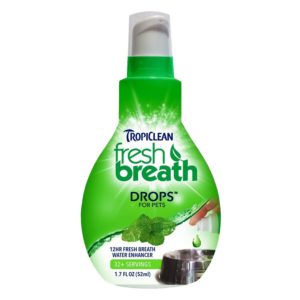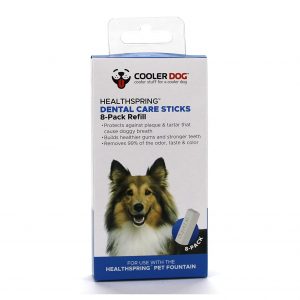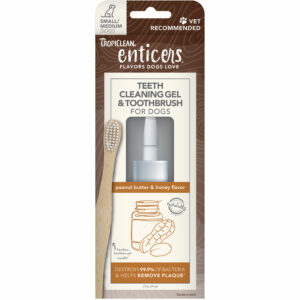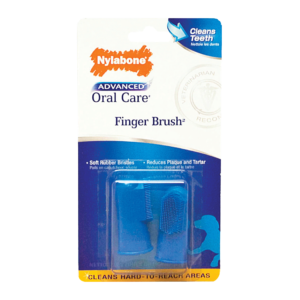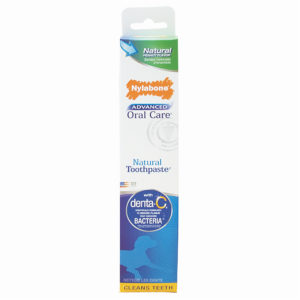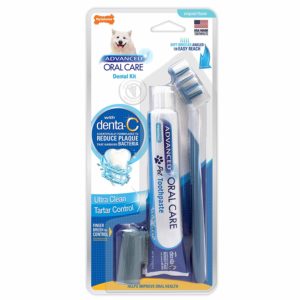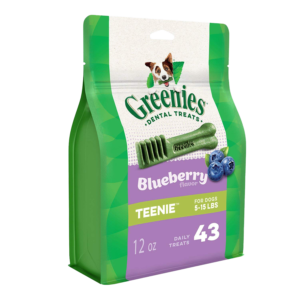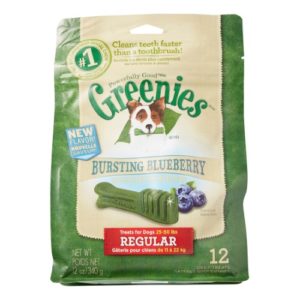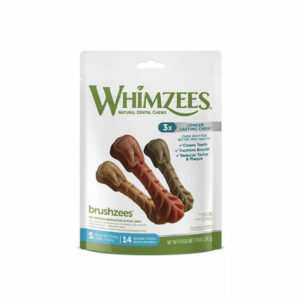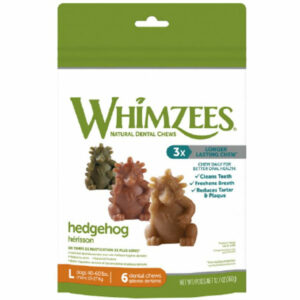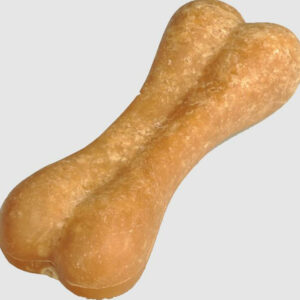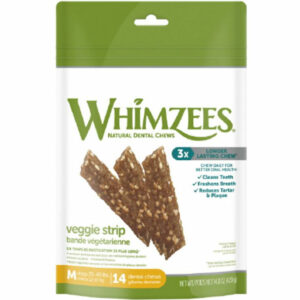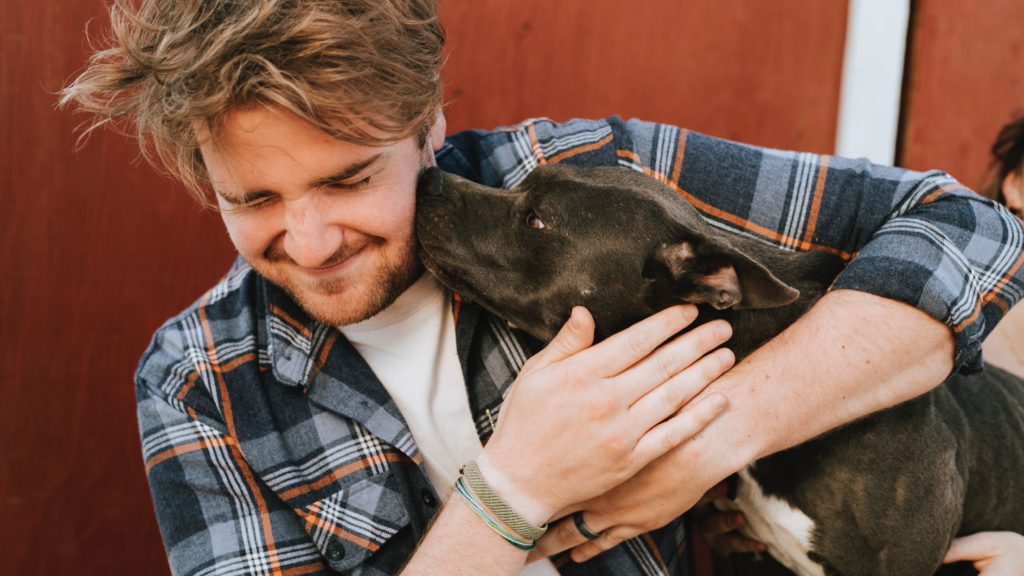
There is just something special about sweet puppy kisses that’s most people just can’t seem to get enough of. But what if your dog’s breath has taken a turn for the worst? Those sweet, sloppy kisses have turned into a lick of swamp breath. Sometimes a temporary change in breath odor can be related to the pungent flavor of a dog food or treat. Most often, however, it is related to poor dental health. Nearly two-thirds of pet owners are not consistently taking the right steps to maintain their pooch’s teeth. With a statistic like that, it is no surprise that 80% of canines exhibit signs of oral health issues by age three or four. What’s worse, 75% or more of common health problems seen by vets have ties to poor oral health.
Identifying Oral Health Issues in Canines

So how is a dog-mama (or papa) to know if their canine’s canines need attention? Signs of common oral health issues include bad breath; redness, bleeding, or swelling at the gum line; loose or discolored teeth; pawing at the mouth; difficulty chewing or only chewing on one side of the mouth; weight loss; or resistance to the mouth area being touched (though this can also be due to unfamiliarity with mouth handling). The best first step is a visit to your veterinarian for a complete check-up. Once your pooch gets the dental all-clear, it’s time to start some routine preventative maintenance!
The Importance of Brushing
Just like us, dogs significantly benefit from regular teeth brushing. Daily is most definitely optimal, but strive to brush your dog’s teeth two to three times per week and you will reap the rewards. It is important to remember that consistency is key. An intense routine of daily brushing that only lasts for a few days to a few weeks will yield little benefit as opposed to brushing just twice a week for the life of your dog. If you are unsure of how to safely brush your dog’s teeth, your local groomer or veterinary staff can show you how to brush those chompers effectively and confidently. Here’s a few quick tips to get you started:
-
Product on saleTropiClean Fresh Breath Drops-1.07 oz$8.79
-
Dental Stick Refill, 8 Pack$9.93
-
Product on saleTropiclean, Enticers, Teeth Gel Bacon w/ Toothbrush, 2 oz.$11.99
-
Product on saleNylabone Advanced Oral Care Finger Brushes$3.99
-
Product on saleNylabone Advanced Oral Care Natural Toothpaste$7.99
-
Product on saleNylabone Advanced Oral Care Dental Kit$11.19
- If you have never brushed your dog’s teeth before, start by just rubbing your fingertips on the outer lip around your pups mouth. As it become comfortable for boot of you, progress to lifting up the lips, the rubbing the teeth and gums with your fingertips. Getting your dog comfortable with mouth handling can be a process and take several weeks. Just be patient and practice daily for just a few short minutes each time.
- When you are ready to actually start brushing, be sure to select a toothbrush and toothpaste designed for dogs. Toothbrushes come in both a classic toothbrush design or a fingertip glove design- both which offer superior cleaning power to your old, worn out human toothbrush. And the toothpaste is formulated with a canine’s flavor preferences in mind- think peanut butter or chicken.
- Be sure to brush in small circular motions, focusing on the area of the teeth that touches the lips. If your dog is not comfortable with brushing the inner surfaces of the teeth, don’t worry- the majority of plaque and tartar buildup happens on the outer surfaces. Ending your brushing session with a quick sweep from gum line to tip of the tooth can help loosen any plaque buildup under the gum line.
- Keep yourself calm and positive and your pooch will feel more relaxed. Don’t forget to reward with lots of love and a maybe even a treat!
Try Dental Treats for Easy Maintenance
Speaking of treats, the right treat can be a key component in your dog’s dental health routine. When given regularly, dental treats can be the easiest way to show your pooch some love and maintain good oral hygiene. Look for treats that have been endorsed by the Veterinary Oral Health Council (VOHC) or American Veterinary Medical Association (AVMA) because they have been specially formulated to promote oral health.
Keep Those Canine Chompers Clean and Strong with Chew Toys

Another fun way to keep those chompers strong and clean is with certain chew toys. Chewing helps reduce a dog’s stress levels and boredom, so looking for a toy that helps maintain oral health is an easy choice. Look for toys that are made of rubber or nylon with bumps and grooves. The toy should be somewhat flexible, not rock hard. Prolonged chewing is necessary for it to help. So slathering that chew toy with a little bit of peanut butter might be the trick to getting your pup interested in a long and productive chew session. Certain types of bones are more appealing than a rubber toy for some dogs. A good chew bone can be a safe and beneficial alternative as long as you look for one that is made of solid, natural rawhide or knuckle bones. Avoid bones that are rock hard, such as hooves and cooked bones. They can actually be more damaging to the teeth and risk splintering and injuring your dog.
Routine Dental Cleanings and Exams are Key to your Pet’s Health

The final, and possibly most crucial, part to keeping your canine’s teeth healthy is yearly exams and routine cleanings. While brushing, dental treats, and prolonged, safe chewing play a significant role in your dog’s oral health, it cannot replace the trained eye and skilled care of a veterinarian. The proactive owner’s diligent efforts can even payoff with decreased need for in-depth cleanings that require anesthesia. All the small steps can add up to less time, money, and stress spent at the vet’s office for more major dental procedures. Not only that, but regular dental care can add years to your dog’s life- and more sweet, sloppy puppy kisses to yours!
*Statistics provided by American Veterinary Medical Association

